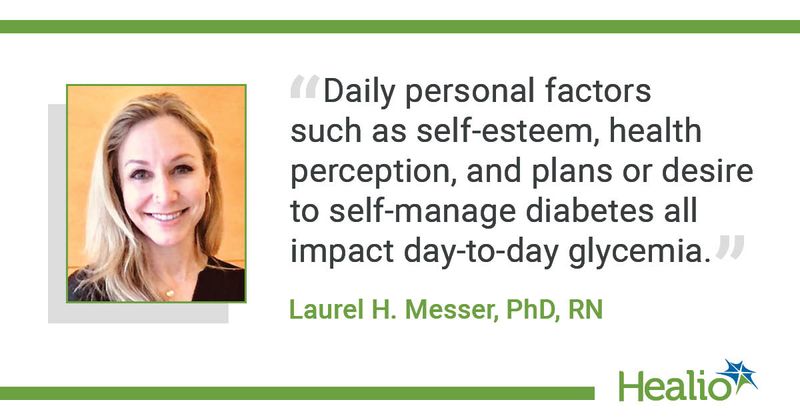Greater engagement with diabetes care linked to lower glucose levels for young people
Adolescents and young adults with type 1 diabetes had lower glucose levels on days when they reported feeling more engaged with their diabetes management, according to findings published in Diabetic Medicine.
“In adolescents and young adults with diabetes, daily personal factors such as self-esteem, health perception, and plans or desire to self-manage diabetes all impact day-to-day glycemia,” Laurel H. Messer, PhD, RN, assistant professor of pediatrics at the Barbara Davis Center for Diabetes, University of Colorado Anschutz School of Medicine, told Healio. “These daily predictors could be considered novel targets for interventions to help support adolescents in their diabetes care, especially around helping to motivate planning and desire to manage diabetes first thing in the morning.”

Messer and colleagues conducted a 2-week longitudinal observational study of 88 adolescents and young adults with type 1 diabetes who used continuous glucose monitoring, an insulin pump or smart pen, and a smartphone to manage their diabetes (mean age, 17.6 years; 54% female; 90% white). Participants downloaded CGM and insulin delivery data at the end of the 2-week period to assess time in range, mean sensor glucose and user-initiated boluses. On six randomly selected days, participants completed a 25-item engagement prediction survey to assess biopsychosocial factors that could potentially influence daily engagement with diabetes management. The survey was administered in the morning and participants answered each question on a 4-point Likert scale. At the end of each assessment day, participants completed an end-of-day goal survey on a 5-point Likert scale to assess diabetes management goal attainment.
Predictors of time in range, glycemic variability
Mean average time in range fluctuated by 16% and mean absolute sensor glucose fluctuated by 30.4 mg/dL per day for each participant (P < .001 for both). The mean absolute change in number of boluses given fluctuated by 2.2 per day (P < .001).
Seven questions in the engagement prediction survey were identified as being most predictive of glycemic outcomes. Those item responses predicted 16.7% of time in range variability, 18.6% of mean sensor glucose variability, 2.1% of variance in the number of boluses, 14% of the variability in hyperglycemia response and 28.7% of variability in diabetes management goal attainment.
Positive engagement linked to lower glucose levels
Participants who reported positively to sleeping longer (beta = –6.6; P < .001), sleeping well the previous night (beta = –12.6; P = .001), planning to manage their diabetes that day (beta = –17.7; P = .004), intending to manage their diabetes (beta = –16.6; P = .008), wanting to manage their diabetes (beta = –15.7; P = .001) and that they were feeling healthy (beta = –22.1; P < .001) were more likely to have lower glucose levels. Conversely, those who said they were too sick to manage their diabetes (beta = 29.1; P < .001) or felt they need extra support for their diabetes management (beta = 11.9; P = .004) had higher morning glucose levels.
The cohort estimated they spent a median of 30 minutes caring for their diabetes and a median of 30 minutes thinking about their diabetes each day. The number of minutes thinking about diabetes was associated with the percent of hyperglycemia alerts responded to (P = .035) and perceived goal attainment score (P = .044). The number of minutes caring for diabetes was also positively associated with goal attainment score (P = .022). Time in range was inversely correlated to the number of boluses each day (beta = –0.9; P < .001).
“We were most surprised that these factors predicted overall time in range; however, we were not able to explain how often the adolescent gave insulin doses for meals,” Messer said. “Usually, you assume that meal doses of insulin are what improve time in range, so we need to do more work to understand this.”
For more information:
Laurel H. Messer, PhD, RN, can be reached at laurel.messer@cuanschutz.edu.
